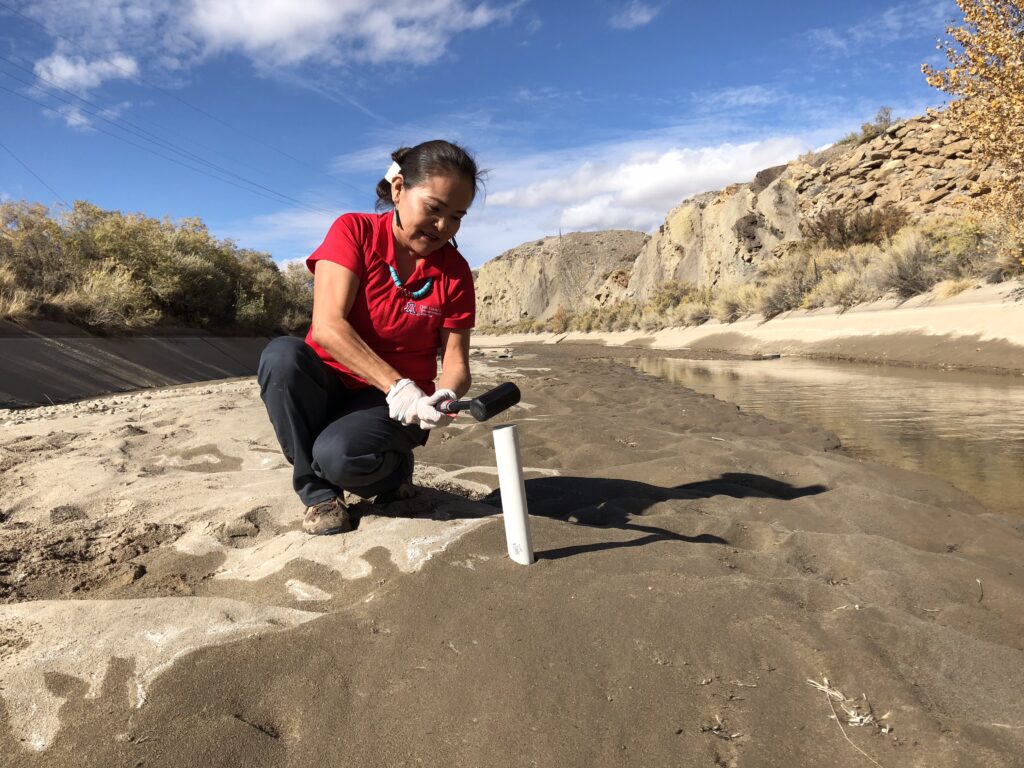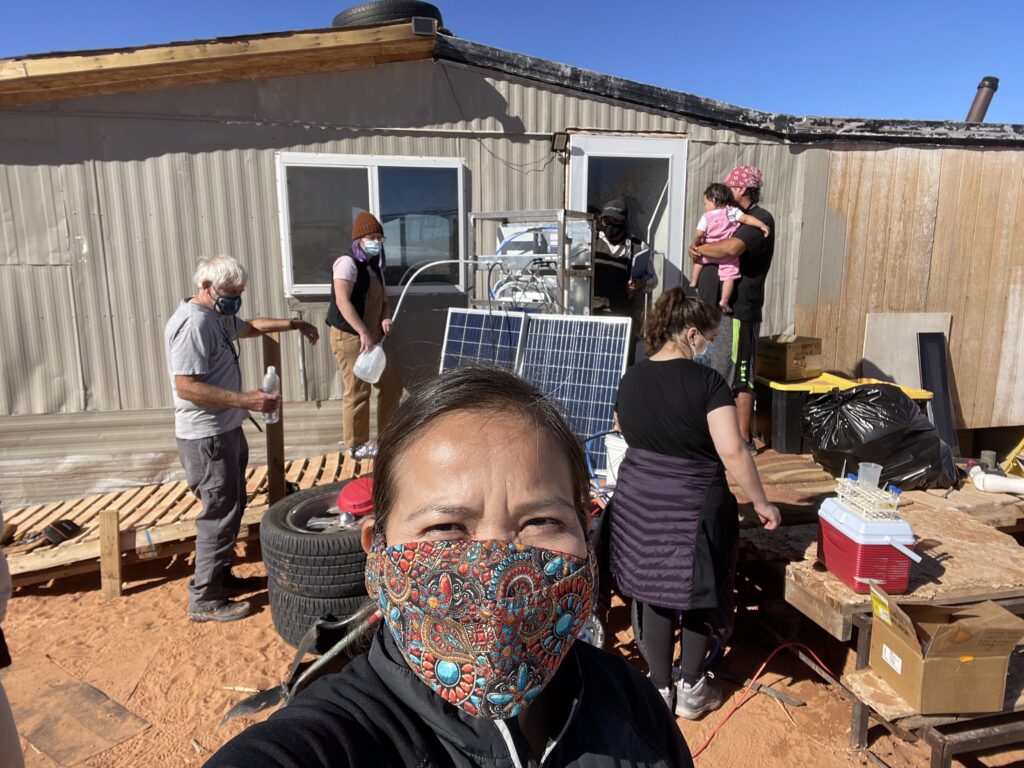
Karletta Chief (Diné) is a professor and extension specialist in the Department of Environmental Science at the University of Arizona and director of the Indigenous Resilience Center. A hydrologist by training, she examines how climate change affects water resources and evaluates environmental health risks in Indigenous communities. Through community-centered engagement, she collaborates with Native Nations—including the Diné (Navajo), Pyramid Lake Paiute Tribe, Tohono O’odham Nation, and others—to develop sustainable solutions for food, energy, and water security. Chief leads major initiatives such as the NSF Native FEWS Alliance, Indigenous Food, Energy, and Water Security and Sovereignty Program, and the Gold King Mine Spill Diné Exposure Project, emphasizing decolonized approaches and Indigenous-led research.
JL: How did your early experiences growing up on the Navajo Nation shape your passion for water and drive your career in environmental science?
Chief: I didn’t have electricity or running water as a child, and my community was isolated with limited resources and access to higher education. Despite this, I was always fascinated by water—especially because I lived in a coal-mining-impacted area where water was available for industrial use but not for my own community. That disparity fueled my determination to study water and find ways to improve access for Indigenous communities. Programs like Upward Bound which support first-generation and underrepresented students in preparing for college, played a crucial role in helping me understand what was possible. A recruiter ultimately helped me take that next step, and I pursued my education at Stanford with the goal of giving back. During my postdoctoral research through the EPSCoR (Established Program to Stimulate Competitive Research) Climate Grant, I joined the Desert Research Institute’s team, where I worked with tribes—including the Pyramid Lake Paiute Tribe—to address water challenges. My community has always been my driving force, and that’s why I do this work.
JL: You recently became the director of the Indigenous Resilience Center, how does this cooperative extension integrate scientific research with Indigenous knowledge?
Chief: The Indigenous Resilience Center (IRes) at the University of Arizona partners directly with tribal nations to develop and implement community-driven strategies that enhance environmental resilience. Our focus is on solutions that not only mitigate climate change impacts but also address broader social, economic, and environmental challenges unique to Indigenous communities. We collaborate with tribal governments, colleges, and local organizations to develop renewable energy solutions like solar-powered water systems, improve drought resilience through regenerative agriculture, and restore Native plant species critical to ecological and cultural sustainability. Additionally, we provide hands-on STEM education tailored to Indigenous students, offering courses in traditional agriculture, natural resource management, tribal environmental health, and Indigenous data sovereignty. By combining scientific research with Indigenous knowledge, we ensure that our projects are both culturally relevant and practically effective, empowering Native communities to lead their own environmental solutions.

JL: How is the Indigenous Resilience Center engaging students in hands-on research and education to address environmental challenges in Indigenous communities?
Chief: At the Indigenous Resilience Center, we are deeply committed to training the next generation of Indigenous STEM scholars by providing hands-on research opportunities that directly benefit tribal communities. One of our key initiatives is the TCUP (Tribal Colleges and Universities Program), funded by the National Science Foundation, where we collaborate with faculty to offer guest lectures, field trips, and credit-earning research experiences for students. Our long-term goal is to integrate these learning modules into tribal college curricula and develop a certification program in sustainable systems.
Through this program, over 40 students have engaged in cutting-edge research on off-grid water systems, solar efficiency, and contamination studies in partnership with tribal communities like the Crow Nation. Students are also working on biosystems engineering projects, such as designing low-tech sensors for hoop houses and exploring Indigeponics, an Indigenous approach to aquaponics that supports food sovereignty. Additionally, we are building a solar-powered greenhouse to demonstrate how wastewater can be repurposed for food production, incorporating electrical and environmental engineering into real-world sustainability solutions.
Students in the Native FEWS Alliance and Ph.D. minor programs collaborate across disciplines, conducting interviews and focus groups to understand how the Navajo Nation and other tribal communities perceive and interact with their food, energy, and water systems.
JL: How do you recommend scientists and professionals develop the skills needed for effective collaboration with Indigenous communities?
Chief: My biggest advice is to approach this work with humility, collaboration, and a willingness to learn beyond your discipline. Working with Indigenous communities isn’t just about applying technical expertise—it’s about building relationships, understanding cultural perspectives, and ensuring that projects truly serve the needs of the people. That means developing skills in science communication, project management, and community engagement, alongside your scientific research.
It’s also essential to seek approval and support from the community before starting any project. Indigenous knowledge and priorities must drive the work, not the other way around. When you genuinely listen, collaborate, and ensure that your work aligns with the community’s goals, the impact becomes much more meaningful. Most of all, enjoy the work—it’s incredibly rewarding to be part of something that makes a real difference in people’s lives.

Are you involved with an organization or effort that you think might be of interest to the ESAL community? Or have heard about an organization or initiative that you’d like to learn more about? Let us know here, and we may feature it in a future post.